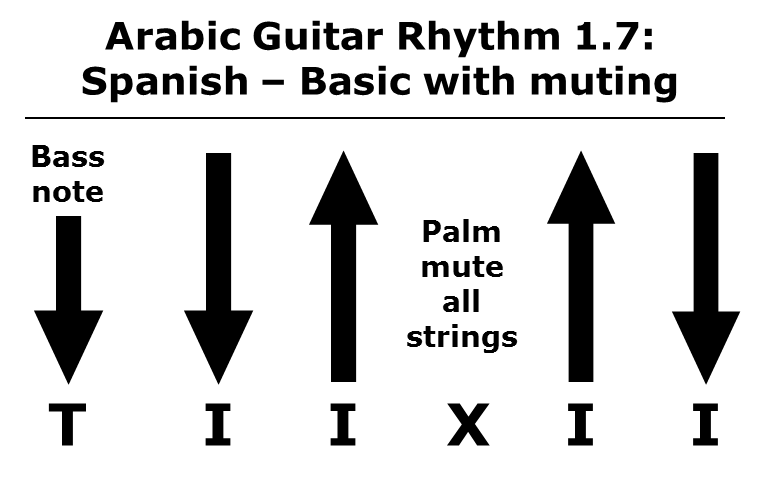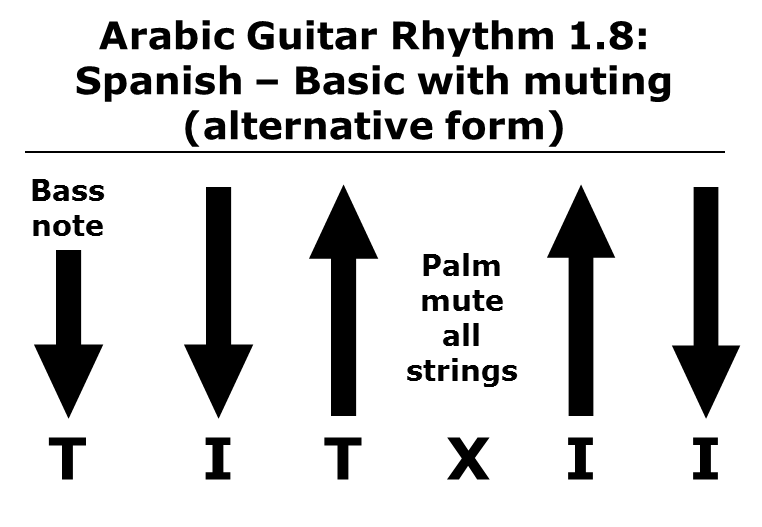
2. Downward stroke of all the chord’s strings with the index finger (I)
3. Upward stroke with the index finger (I)
4. Mute all the strings by spreading your fingers and resting your palm on the strings
5. Another upward stroke with the index finger (I)
6. Final upward stroke with the index finger (I)
Another variation to the above is to use the thumb for the third stroke (the first upward one). You might prefer this one over the previous ones as it lets you play the rhythm faster. This is due to the fact that the thumb is easier to move by the twist of the wrist (where the fingers’ movement originates). In any case you should try both and see which one you are more comfortable with. The steps for this alternative form are:

2. Downward stroke on all strings with the index finger (I)
3. Upward stroke with the thumb
4. Mute all the strings by spreading your fingers and resting your palm on the strings
4. Upward stroke with the index finger
5. Final upward stroke with the index finger
This wraps it up for the palm muting technique. We are now ready to combine both the Rasgueado (covered in rhythms 1.4, 1.5, 1.6) and the palm muting to the original basic rhythms in order to get the full sound of the Spanish Rhythm. This is covered in the next lesson
GoOD JoB
I noticed that the Spanish rhythm is the same rhythm as rumba . Is it two different names for one rhythm ?
Hi houssam,
Yes it's the someone we call it Spanish here it may be called other names elsewhere
What are the chords that you're using?